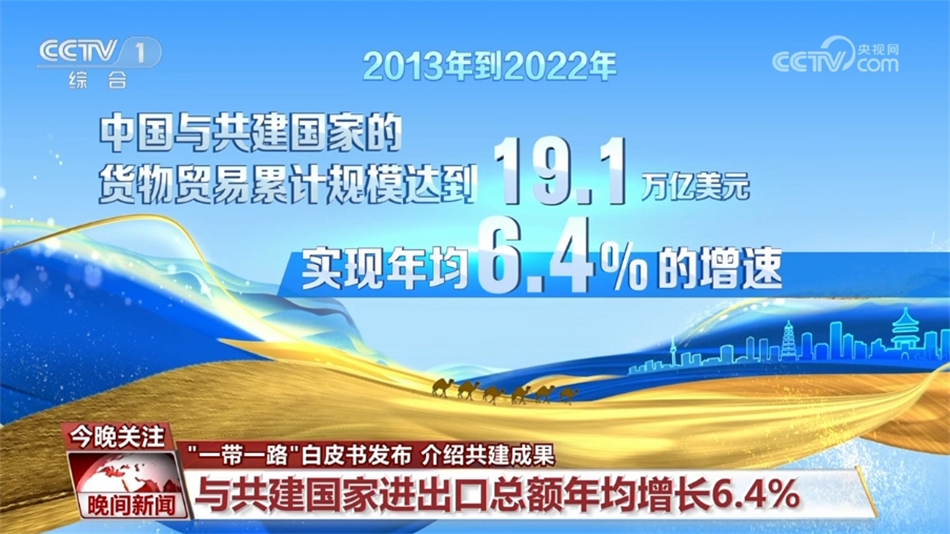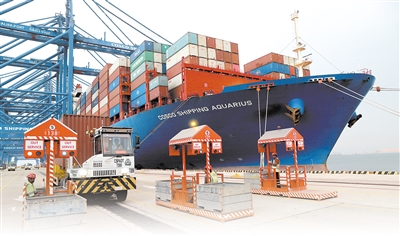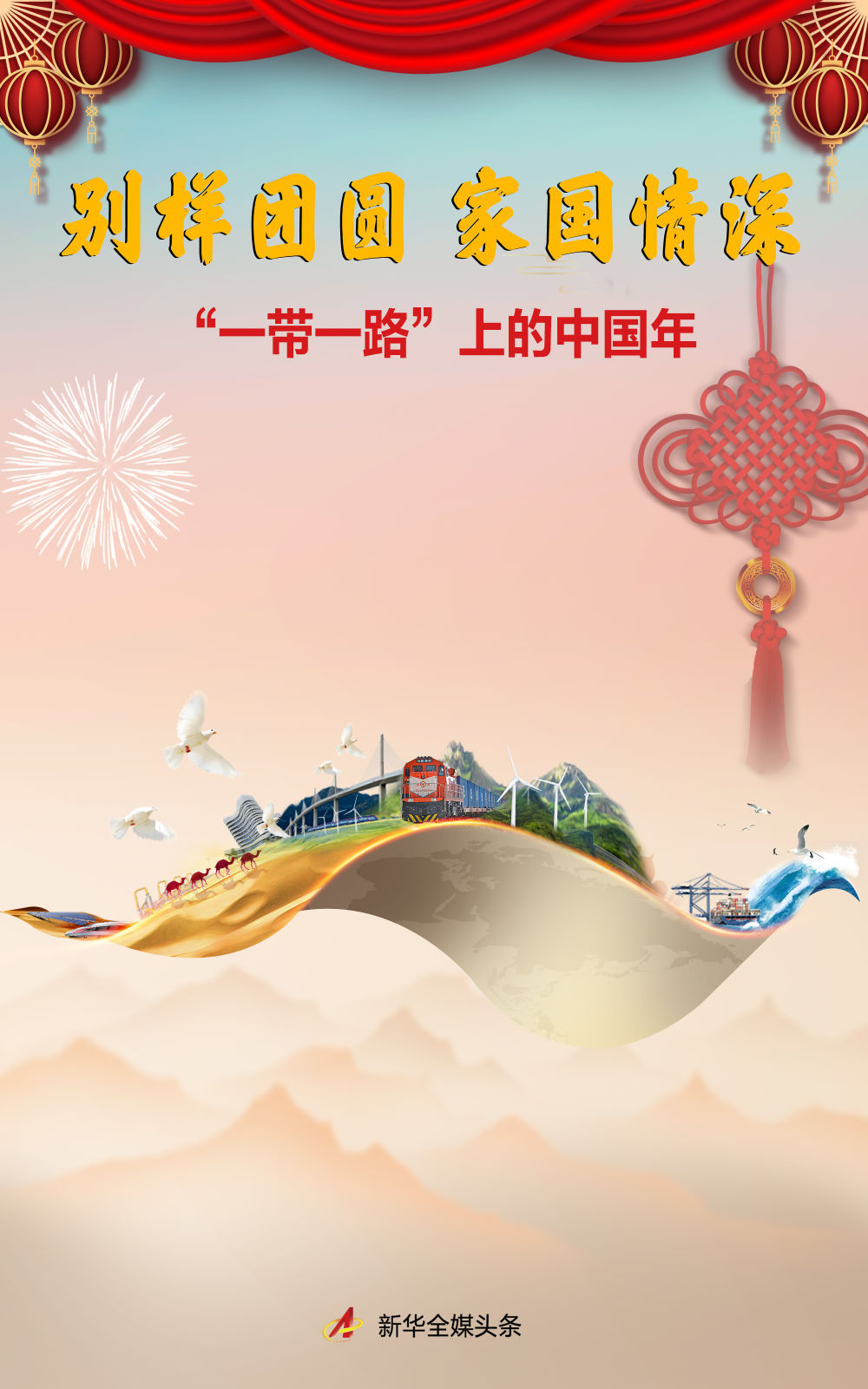Malaysia: Seeking Ideas And Resonance On The Road To Modernization
Malaysia: Seeking Ideas And Resonance On The Road To Modernization
Malaysia: Seeking ideas and resonance on the road to modernization
【Walking with China to the Future】
Under the caress of the equatorial sunlight, the sea breeze between the Malay Peninsula and Borneo quietly blew. Malaysia, this colorful South Asian country, is expressing its desire for modernization with its unique diversity and enthusiasm. This place has carried the flow and integration of various civilizations and cultures since ancient times, and has witnessed the feat of Zheng He's fleet voyage to the West, as well as the strong ships and cannons of the colonists of Portugal, the Netherlands, the British and Japanese. Today, as a global southern country, it is working with its neighbors across the sea to explore a modern path that conforms to its national conditions.
Difficult exploration of early modernization
As a country that started the modernization process earlier in Southeast Asia, its long-term colonial history once made Malaysia a mark of thinking that "modernization is Westernization". At first, through the introduction of large amount of Western capital and technology, the country's industrialization and urbanization made some progress, but soon problems such as dilution of local culture and intensification of social contradictions emerged.
In 1981, Mahathir, then Prime Minister of Malaysia and the "father of Malaysia's modernization", proposed the "Look East" policy, trying to correct the previous dependence on political, economic and cultural values of Western countries such as the United Kingdom, explore and expand economic and trade relations with the "East" (especially Japan and South Korea), attracting the two countries to invest and set up factories in Malaysia, learn their advanced technology, management experience and professional spirit, and serve the development requirements of Malaysia's industrial modernization. As a result, this country, once called "Malaysia", began to cross the river by feeling the stones and explore development models that are different from those of the West.
However, the Asian financial crisis in 1997 brought a heavy blow to Malaysia's modernization path, and structural problems such as excessive dependence on foreign investment and exports, key technologies being locked in the middle and low-end links, and fragile financial system were fully exposed. As early as 1995, Malaysia was classified as an upper-middle income country. But for more than 20 years since then, he has been staggering and has been unable to get out of the "middle-income trap" for a long time. This path to modernization of late-developing countries is almost lost in the dual dilemma of industrial lockdown and institutional bottleneck.
Fortunately, this country, which was once known as one of the "Four Tigers in Asia", still has its original intention of pursuing modernization. The turning point begins in the East. China has gradually become a companion in Malaysia's modernization process.
Activate the cooperation code in the historical gene
As friendly neighbors across the sea, the traditional friendship between China and Malaysia has spanned thousands of years. As early as the Qin and Han Dynasties, China and the Malay Peninsula had economic, cultural exchanges through the Maritime Silk Road. More than 1,300 years ago, Master Yijing of the Tang Dynasty crossed the sea to seek Dharma and passed through the Malay Peninsula, and for the first time recorded the history of the Gujida Kingdom in writing. More than 600 years ago, Zheng He, a navigator of the Ming Dynasty, made seven ocean voyages, and five of them visited Malacca. He not only brought silk and porcelain, but also sowed the seeds of mutual learning among civilizations.
On May 31, 1974, China and Malaysia formally established diplomatic relations. Malaysia became the first ASEAN country to establish diplomatic relations with China. In 1985, then-Malaysian Prime Minister Mahathir led an unprecedented economic and trade delegation to China for the first time, and began to pay attention to "in order to accelerate the modernization plan, China is also experimenting with new ideas", and proposed that "we hope that the two countries will seriously consider how to share their respective modernization and industrialization achievements in situations that are beneficial to both sides."
Since then, with the end of the Cold War, the rise of the wave of economic globalization, and China's accession to the World Trade Organization, China-Malaysia relations have been continuously injected with new impetus at the bilateral, regional and global levels. Malaysia is also increasingly keenly capturing new opportunities to modernize with China.
In 2013, President Xi Jinping visited Malaysia and the relationship between the two countries was upgraded to a comprehensive strategic partnership. In the same year, with the proposal of the joint construction of the "Belt and Road" initiative, the cooperation code in the historical gene of China-Malaysia relations was completely activated. In April this year, President Xi Jinping visited Malaysia again after 12 years. The leaders of the two countries have raised the positioning of bilateral relations to a new level, announced the construction of a high-level strategic China-Malaysia community with a shared future, injecting new impetus into the two sides' joint efforts to explore modernization.
As of 2024, the bilateral trade volume between the two countries reached US$212 billion, an increase of nearly a thousand times from the time of the establishment of diplomatic relations. China has become Malaysia's largest trading partner for 16 consecutive years. Behind these numbers is the livelihoods of countless Malaysian families, and it is also a silent witness to the deep integration of the modernization process of the two countries.
The connotation of "Looking East"
In recent years, Malaysian leaders have decided to inject new era connotations into the "Looking East" policy in the new era, actively incorporate China into the "Looking East", and emphasize that China's experience in digital economy, infrastructure and poverty reduction is more in line with Malaysia's actual needs. Prime Minister Anwar made it clear in an interview with the media that Malaysia will also "learn from China" and "now, when we say 'toward east', it is an Eastern region including China."
In response to this, all sectors of Malaysia actively supported and responded enthusiastically. "Malaysia regards China as a trusted partner and is committed to developing strong partnerships with China, achieving common progress, and becoming a peer on each other's path to modernization." said Malaysia's Supreme Head of State Ibrahim. In the view of Ni Kemin, Minister of Development of Malaysian Local Government, "China has successfully eliminated poverty, achieved industrial transformation, and became the second largest economy in the world. These three achievements are worth learning from by Malaysia."
Only when the water you have drunk will you know whether it is sweet or not. Malaysia is one of the first countries to respond and actively participate in the joint construction of the "Belt and Road". Whether traveling to China in person or participating in the "Belt and Road" cooperation project, many Malaysians have witnessed China's achievements in infrastructure construction, scientific and technological innovation, poverty alleviation and other fields, as well as the tangible benefits brought to Malaysia by strengthening cooperation between the two countries.
The China-Malaysia Qinzhou Industrial Park and the Malaysia-China-Kuntan Industrial Park jointly planned by the leaders of the two countries have created a new paradigm for international production capacity cooperation in "two countries and two parks". In the Malaysia East Coast Railway Project undertaken by Chinese companies, builders from the two countries work together to overcome huge challenges such as complex geological conditions. Once this railway is completed, it will reshape the economic and geographical pattern of the east and west coasts of the Malay Peninsula.
The opening of the Kuantan Port-Beibu Gulf Port cold chain boutique route allows Malaysian specialty products such as Masan King durian to quickly reach the Chinese market. At the same time, China's electronic products and new energy vehicles have also used the logistics network to penetrate deep into the hinterland of Malaysia. This "cooperation on the tip of the tongue" and "technical interoperability" will truly benefit the ordinary people.
The two countries also agreed to jointly build a highland for regional new quality productivity cooperation, focus on cutting-edge fields such as digital economy, green economy, and artificial intelligence, strengthen the integrated development of industrial chains, supply chains, value chains, data chains, and talent chains, and help each other's modernization process.
"Malaysia cherishes cooperation with China very much." Malaysian Minister of Economic Affairs Rafizi Ramli said, "The economic and trade relations between the two countries are at the best time in history. In recent years, China has carried out more and more cooperation projects in Malaysia, bringing valuable and broad development opportunities to Malaysia." Weng Shijie, former Minister of the Malaysian Ministry of Transport and President of the Asia-Pacific "Belt and Road" Co-profit Association, sighed: "After the 'marriage' with Chinese company Geely, Malaysian car company Proton turned losses into profits in the short term, which made the industry admire him."
Those who touch others with sincerity will respond with sincerity. In recent years, no matter how the international situation changes, Malaysia's policy toward China has always maintained the main tone of independence, rationality and cooperation. Prime Minister Anwar repeatedly emphasized in many public occasions that "China is a trustworthy friend and partner of Malaysia" and bluntly stated that "China is a big country with strong economic development and strong military power, but we have never felt any trouble or pressure in our interactions with China."
Recently, the policy of mutual visa exemption between China and Malaysia has taken effect, and the "two-way rushing" between tourists from the two countries has become a trend. Behind the achievement of "letting go whenever you want" is the full trust between the two countries.
In fact, Malaysia's strategic direction has changed from being close to Japan and South Korea to learning from China in order to re-anchor the development of autonomy in the restructuring of the global industrial chain. From the "Looking Eastward" policy towards Japan and South Korea in the early days of independence to the in-depth cooperation with China today, this country with diverse cultures has always been looking for a development path that suits them.
At the beginning of this year, after the Chinese animated film "Nezha: The Devil Child's Fighting Sea" was released in Malaysia, it became one of the most popular Chinese films in the local area. The sentence "My life is my own, not my own," aroused emotional resonance in the hearts of Malaysian audiences. This classic line seems to tell people that every country with dreams can strive to master its own future and write its own history.
Explore multiple possibilities in dialogue between civilization
In 1996, then-Machine Malaysian Vice Prime Minister Anwar criticized the arguments of "the end of history" and "theory of conflict of civilizations" in his book "Asian Revival", emphasizing that modernization does not equal westernization, and advocated that Asian countries should build development models based on local values. In his book, he outlined a vision: Asia can be revived to a level comparable to the "global north", and Asian countries can prosper by seeking common ground while reserving differences. In his book "The 21st Century of Asia", Ma Kaishuo, a famous Singaporean scholar, echoed Anwar's view, believing that the Asian revival is a "return of history", emphasizing that Asia has been the global economic center in the past 2000 years, and Western dominance is just a brief episode.
In 2023, Prime Minister Anwar proposed the "Changming Malaysia" governance concept based on the six principles of "sustainability, prosperity, innovation, respect, trust and care". Prime Minister Anwar believes that the concept of governing the country and the three major global initiatives proposed by President Xi Jinping are highly consistent with the concept of "Changming Malaysia". "President Xi Jinping emphasizes culture, civilization, and shared prosperity. In this era, this style is difficult to see in ordinary politicians. This is consistent with 'Changming Malaysia', both emphasize values, humanitarianism, global vision, and focus on the construction of spiritual civilization." Prime Minister Anwar believes that "people often discuss economy, technology, digitalization and artificial intelligence, which is of course very important, but we also need the humanistic spirit."
On the road to exploring modernization, the power of civilization cannot be ignored. China emphasizes "harmony but difference", while Malaysia has a tradition of "multi-dimensional symbiosis". The two have similarities and integration, injecting inexhaustible impetus into the two countries' joint journey to modernization.
Majid, president of the Malaysia-China Friendship Association, believes that the leaders of the two countries have in-depth thinking and broad consensus on strengthening dialogue on civilizations. "In a turbulent world, this in-depth communication and conceptual resonance beyond the general economic and trade scope not only injects new connotations into China-Malaysia relations, but also helps to enhance the understanding and mutual trust of different civilizations and achieve harmonious coexistence of world civilizations."
It is under the guidance of this concept of civilized dialogue that Malaysia has proposed to hold the unprecedented ASEAN-China-GCC summit this year to promote the construction of a cross-regional cooperation framework. China actively participates and promotes trilateral cooperation to better benefit the people of the region.
Modernization does not mean that we become others, but that we make us better selves. Today, Zheng He's statue still stands in the Sanbao Temple in Malacca, telling the oriental wisdom of "harmony and symbiosis", witnessing the deep foundation of friendship between China and Malaysia for generations and the generational friendship of "untilting water". Looking back on the past, the seeds of peace and friendship sown by Zheng He have flourished under the nourishment of banana wind and coconut rain. The ship of friendship between China and Malaysia, which has sailed from the long river of history, is moving forward on the ocean that pursues modernization in the 21st century.
The story of China-Malaysia cooperation will eventually become a warm and immortal memory in the precipitation of years - about how two civilizations achieve each other in dialogue and about how two countries move towards a modern future together in cooperation.
(Author: Deng Han, a researcher at the Central Party School [National School of Administration] Research Center for Xi Jinping Thought on Socialism with Chinese Characteristics for a New Era)
" style=":none">





